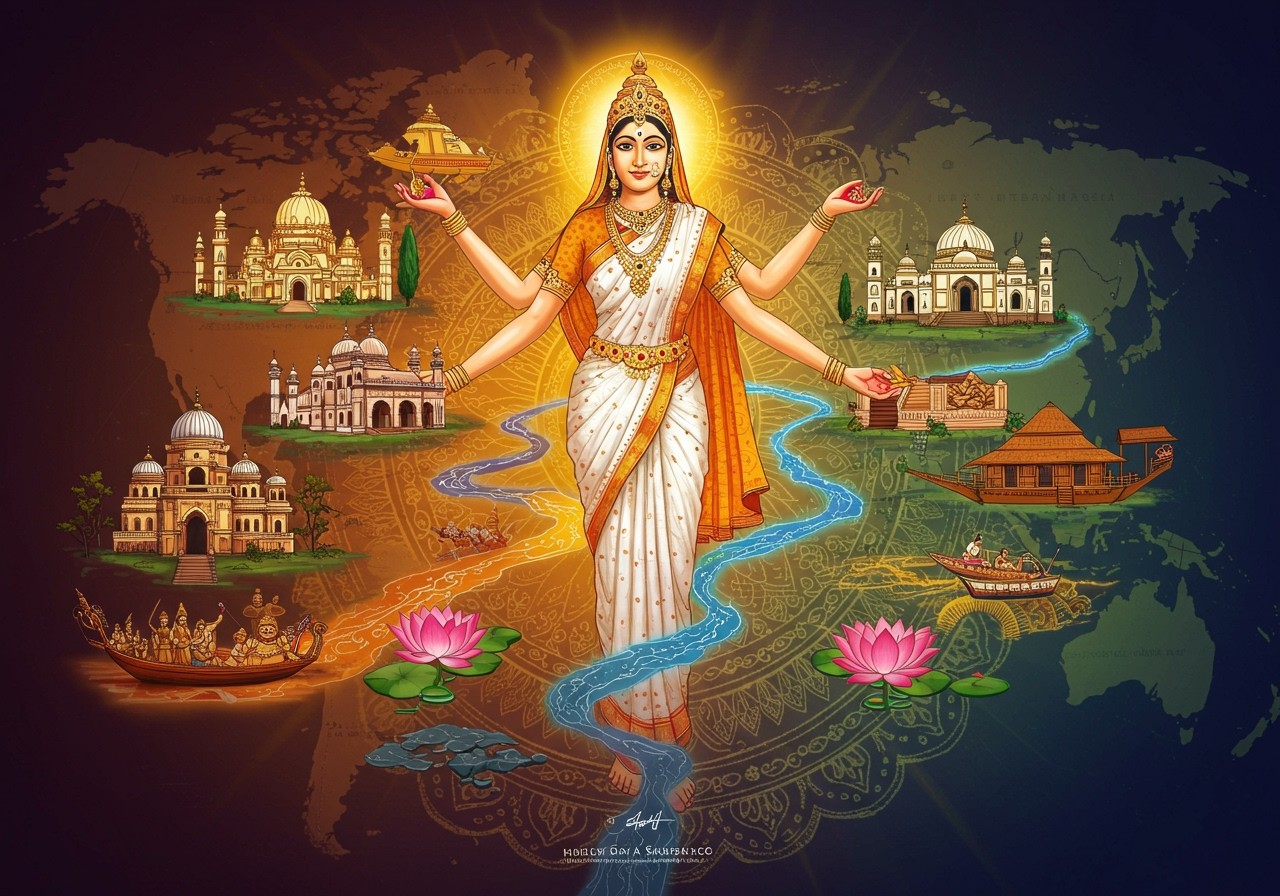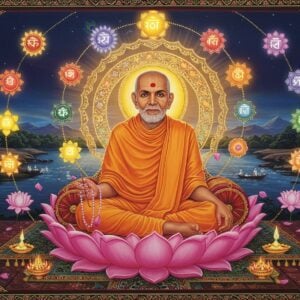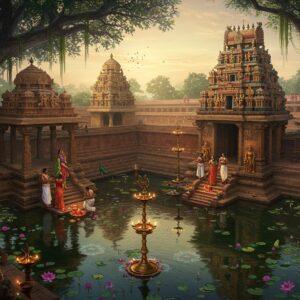
Understanding how India’s states and union territories came to be is key to appreciating the nation’s vibrant history and diverse traditions. This exploration not only connects us to our heritage but also offers a glimpse into the political and social forces that shaped modern India. For those who cherish tradition and seek convenient access to information online, this topic is especially pertinent. Let’s clarify some key terms: states are substantial regions with their own governing bodies, union territories are areas administered directly by the central government, and formation describes the process of their creation or restructuring.
Pre-Independence Era (Before 1947)
Prior to 1947, India was a patchwork of British provinces and princely states. The British Crown exerted control over these areas through treaties and alliances. Provinces fell under direct British rule, whereas princely states retained local rulers who acknowledged British sovereignty. This era was characterized by a mixed governance system, shaped by both British administration and indigenous practices. The complex interplay of these systems laid the groundwork for the administrative structures that would emerge after independence.
The Indian Independence Act of 1947 stands as a pivotal moment. It resulted in the partition of India and Pakistan, marking the end of British rule and the beginning of a new era. This act also set the stage for the formation of modern states and territories, as the newly independent nations began to define their internal boundaries and administrative units.
Post-Independence Reorganization (1947-1956)
Following independence, India faced the monumental task of integrating over 500 princely states into a unified nation. Key figures like Sardar Vallabhbhai Patel and V. P. Menon played instrumental roles in this process, employing political negotiation and strategic decision-making. This integration was crucial for establishing a cohesive Indian Union, bringing together diverse regions under a common national identity.
In 1956, the States Reorganization Act addressed the growing demand for states based on linguistic identity. This landmark legislation led to the creation of Andhra Pradesh, carved out of Madras State’s Telugu-speaking areas, marking the first state formed along linguistic lines. The reorganization sought to align administrative boundaries with cultural identities, promoting regional languages and recognizing distinct cultural zones.
Formation of New States and Union Territories (1956-2019)
The formation of new states and union territories continued beyond 1956, driven by cultural, linguistic, and administrative considerations. Movements advocating for separate statehood gained momentum, leading to the creation of Maharashtra and Gujarat from the former Bombay State in 1960. The emergence of Chhattisgarh, Uttarakhand, and Jharkhand in 2000, followed by Telangana in 2014, further illustrates this ongoing evolution. Each instance reflected specific socio-political dynamics and regional aspirations, demonstrating the responsiveness of the Indian government to the diverse needs of its people.
Union territories also underwent reorganization during this period. Goa, Daman and Diu, and Puducherry stand as examples of such entities, created to address particular administrative and cultural contexts. The unique circumstances of these territories necessitated specialized administrative arrangements, reflecting the diverse historical and cultural influences that shaped them.
States and Union Territories of India Before 2019
Before 2019, the political map of India showcased a rich tapestry of diversity. Jammu and Kashmir held a unique position under Article 370, granting it special autonomy. This provision allowed the state to have its own constitution and legislative powers over all matters except defense, foreign affairs, finance, and communications. This special status underscored the region’s distinct cultural and historical identity, setting it apart within the Indian Union.
At that time, India comprised 29 states and 7 union territories. Each state possessed its own government with legislative authority over a range of matters. Union territories, on the other hand, fell under the direct administration of the central government, often due to their smaller size or strategic significance. These included areas like Delhi, Puducherry, and Chandigarh, each managed with specific administrative arrangements to accommodate their unique cultural or geographic circumstances.
Recent Reorganization and its Implications (2019 Onwards)
A significant shift occurred in August 2019, reshaping India’s political landscape. The abrogation of Article 370 revoked Jammu and Kashmir’s special status, bifurcating it into two union territories: Jammu & Kashmir and Ladakh. This move aimed to integrate the region more closely with the rest of India, enhance governance, and foster development. The decision marked a significant change in the region’s administrative structure, bringing it under closer central government oversight.
This reorganization introduced new governance structures and policies. Security measures were strengthened, and efforts were intensified to promote economic growth and infrastructure development. The change sparked discussions about the balance between regional autonomy and national integration, raising important questions about the future of federalism in India. This move also prompted debates about the long-term impact on the region’s political and social dynamics.
The implications for India’s federal structure are far-reaching. It raises questions about the potential for future reorganizations based on administrative efficiency or strategic considerations. The central government’s role in such decisions remains critical for maintaining harmony between diverse regional aspirations and national unity. The reorganization underscores the ongoing evolution of India’s federal system and the need for continuous adaptation to changing circumstances.
Guiding Principles for State Formation
Several key principles have guided the formation of states in India. Linguistic considerations have played a prominent role, as exemplified by the creation of Andhra Pradesh in 1953. Cultural identities have also been influential, ensuring that administrative boundaries respect local customs and traditions. This recognition of linguistic and cultural diversity is a cornerstone of India’s approach to state formation, aiming to create administrative units that reflect the cultural landscape.
Economic factors have been crucial in determining the viability of new states. Regions with distinct economic profiles or resource bases have sought statehood to manage their development effectively. Administrative efficiency has also been a guiding factor, ensuring that governance is streamlined and responsive to local needs. This focus on economic and administrative viability ensures that new states are equipped to manage their affairs and contribute to national development.
The Indian Constitution provides the framework for these decisions, with the central government playing a pivotal role in balancing national interests with regional aspirations. National unity and integrity remain paramount while accommodating the diverse cultural identities within India’s federal structure. This delicate balance between national unity and regional diversity is a defining characteristic of India’s political system.
Understanding these principles provides valuable insights into the ongoing evolution of India’s states and union territories. It reflects a commitment to addressing regional demands while preserving a cohesive national identity. This dynamic interplay between regional and national interests shapes the ongoing development of India’s federal structure.
How Poojn.in Supports Regional Cultural Traditions
As India’s states and union territories have evolved, so too have their unique cultural practices and ritual needs. Poojn.in recognizes these regional variations and offers a curated selection of products to meet diverse local requirements. Traditional prayer mats, known by different names across regions, are essential for various rituals and ceremonies. We offer a wide variety of regional prayer mats, including:
- Gongadi mats from Gujarat’s Kutch region: Known for their vibrant colors and intricate embroidery, these mats add a touch of traditional artistry to prayer spaces.
- Durries from Rajasthan and Punjab: Woven with care and skill, these mats offer comfort and durability for daily prayer rituals.
- Khes/Khesh mats from West Bengal: Crafted from recycled sarees, these mats represent sustainable practices and cultural heritage.
- Phadi mats from Gujarat and Rajasthan: Made from cotton or wool, these mats provide a comfortable and supportive surface for meditation and prayer.
- Galicha mats from Maharashtra: Often adorned with traditional patterns and designs, these mats enhance the aesthetic appeal of prayer spaces.
These prayer mats are available in various sizes and materials to suit different ritual purposes. Each product on Poojn.in is accompanied by detailed information about its regional significance and usage guidelines. This allows customers to make informed choices and connect with the cultural heritage behind each item.
Poojn.in’s nationwide delivery network ensures access to region-specific ritual items irrespective of location. Whether you are a Gujarati family in Bangalore or a Bengali household in Mumbai, Poojn.in helps you maintain your cultural practices with authentic ritual materials. Our comprehensive logistics network ensures timely delivery across India, bringing the richness of regional traditions to your doorstep.
Explore our collection of regional prayer mats and other ritual items specific to your state or cultural tradition at www.poojn.in. Our customer service team is readily available to assist you in selecting the perfect items based on your regional customs and requirements. We are committed to providing personalized support and guidance, ensuring a seamless shopping experience.
You can also find various other products related to your spiritual needs such as Sakha by Poojn, Paita Ashim Banerjee Paita, Maa Lakshmi 6.5″ Astadhatu Brass Laxmi Mata Murti, Ogour Pure Aguru, Jati Kapali Ghater Jati, Maha Tirtha Gold Sindoor, Pure Pik Whole Turmeric Sticks, Aroma Aguru by Aroma Chemical, Ganesh Brand Best Camphor and Cycle Rhythm Amber with Free Loban Sambrani.
Conclusion: Embracing Unity in Diversity
The formation and reorganization of India’s states and union territories reflect the nation’s commitment to honoring its rich cultural tapestry while pursuing unity and progress. These changes are guided by principles that respect linguistic, cultural, and economic distinctions, ensuring that each region’s unique identity is recognized within India’s federal framework. This ongoing process reflects the dynamic nature of India’s socio-political landscape.
The evolution from 29 states and 7 union territories to the current political map showcases India’s adaptability and dedication to effective governance. The reorganization of regions like Jammu and Kashmir into union territories highlights the ongoing efforts to integrate and uplift areas for improved development and security. These changes reflect the government’s commitment to adapting administrative structures to meet the evolving needs of the nation.
As India continues to progress, the guiding principles of state formation will become even more critical. Balancing regional aspirations with national interests remains essential for fostering harmony and unity. Embracing this dynamic process allows India to grow stronger, ensuring that every region contributes to the collective advancement of the nation. This ongoing evolution of India’s federal structure is a testament to its commitment to unity in diversity.
FAQs: Formation of States and Union Territories in India
What were the administrative divisions of India in 1947? In 1947, upon gaining independence, India comprised provinces and princely states. These were subsequently reorganized to form the initial states and union territories, laying the foundation for the modern administrative structure.
How has the administrative map of India changed since 1947? Over time, India has undergone several reorganizations. New states have been created based on linguistic, cultural, and administrative considerations. Union territories have also been established and modified for better governance, reflecting the dynamic nature of the country’s administrative evolution.
Why does India have both states and union territories? States possess their own elected governments, while union territories are administered directly by the central government. This arrangement allows for effective governance in regions with unique circumstances, smaller populations, or strategic importance, ensuring that diverse administrative needs are met.
What are the key factors considered when forming new states in India? The primary factors include linguistic and cultural similarities, economic viability, and administrative convenience. These considerations aim to ensure balanced development and effective governance, taking into account the diverse needs and characteristics of different regions.
Can you provide examples of states formed after 1956? States like Gujarat, Maharashtra, and Haryana were formed after the States Reorganization Act of 1956, primarily along linguistic lines. This demonstrates the ongoing evolution of India’s administrative map and the responsiveness of the government to regional demands.
What is the current number of states and union territories in India (post-2019)? As of 2019, India has 28 states and 8 union territories. This change resulted from the reorganization of Jammu and Kashmir into two separate union territories, reflecting a significant shift in the country’s administrative structure.
What is the central government’s role in forming states and union territories? The central government, along with the President of India, holds the authority to reorganize states and union territories. This is often done based on recommendations from commissions or in response to public demand, ensuring that administrative changes align with national interests and regional aspirations.


